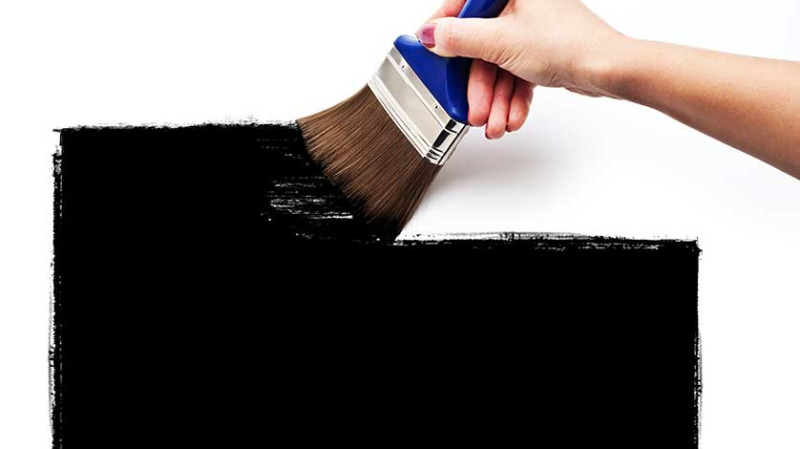
It’s a tip you see everywhere on DIY forums, YouTube, and even from some professional painters: “Cut in like a pro.” And while using precise brush strokes to neatly “cut in” edges around ceilings, trims, and corners can give you sleek lines, the truth is, this common method of painting might be holding you back more than helping.
Whether you’re a DIY enthusiast refreshing your living room, an interior designer looking for that perfect finish, or a tradesperson delivering flawless results for clients – the classic “cut and roll” technique isn’t always the best strategy. Let’s explore why, and discover how to avoid this all-too-common painting pitfall.
The Classic 'Cut and Roll' Technique Explained
If you’re new to painting or have only followed mainstream advice, “cut and roll” might sound like the gold standard. This method separates the painting process into two steps. First, you use a paintbrush to “cut in” – carefully painting edges and corners near trim, baseboards, ceilings, and door frames. You then grab your roller and paint the main surface area, working your way around the zone you’ve already cut in.
The aim is to avoid getting paint on surfaces you don’t want to touch, which is a good thing. However, the problem lies in the timing, the finish consistency, and – believe it or not – how your eyes perceive the wall after drying. The gap between the cut-in brushwork and the roller can often leave visible edge lines, sometimes referred to as "picture framing" or "hat banding.”
These lines are caused by slight differences in paint texture and thickness. A brush lays it on thicker, in slightly different patterns, than a roller does – and this becomes noticeable once everything has dried. Even if you're using high-quality paint with great coverage, inconsistent application can lead to disappointing results.
This is a particular concern in natural or artificial light, where subtle shading changes become extremely noticeable. For those of in the UK, with shorter winter days and reliance on indoor lighting, these inconsistencies can be especially frustrating.
Where the 'Pro' Style Goes Wrong
While many professional decorators swear by the “cut and roll” approach (and it can certainly work in some scenarios), doing the cutting too early or taking too long between the cut and the rolling leads to a mismatch in texture and absorption time on the surface.
Another issue? Brush strokes tend to dry faster than rolled sections, especially when you’re working in a heated or well-ventilated room – common in UK homes where radiators are blasting in winter. Once the brushwork has dried and you roll close to the edges, a difference in sheen can emerge – even if you’re using the same paint from the same tin.
Even worse, many newer DIYers are told to complete all the cutting first, then roll later – sometimes hours or even days afterwards. That’s a recipe for visible framing and a patchy uneven finish.
So what’s the solution? Keep reading – it’s easier than you think.
The Better Way: 'Work Wet to Wet' for Seamless Blending
The key to a uniform, professional-looking finish lies in a simple method: working 'wet to wet'. This means cutting in a small section at a time, then immediately following up with your roller while the brush lines are still wet. This technique helps blur the difference between brush and roller strokes, resulting in a seamless appearance.
This method is especially effective for emulsion paints, which are the go-to choice for walls and ceilings in most UK homes. Emulsions dry relatively quickly, so timing is everything. If you cut in and then wait too long before rolling over the area, that drying gap becomes visible once the wall fully dries.
By keeping the edges and flat areas wet at the same time, you allow the roller to “feather” into the cut lines, blending everything together. It’s faster too. Instead of going around the entire room with a brush, then circling back with a roller, you simply tackle one area at a time – for example, cutting and rolling each wall corner-to-corner before moving to the next.
This method is particularly helpful for single decorators or smaller teams – offering more control and a better end result without complicated techniques or tools.
Pro Tips to Perfect Your Finish Without the Cutting Mistake
- Use the same batch of paint: Always make sure your roller tray and brush are fed from the same tin of mixed paint to ensure uniform colour and texture.
- Work in sections: For best results, cut a section of about 1-2 metres wide, then immediately roll that zone. Move from top to bottom in even strokes.
- Feather the roller near the edge: Lightly overlap into your brush work and avoid putting pressure on the roller at the edge to avoid heavy lines.
- Keep a wet edge: Try to avoid letting any part of the paint dry between stages. This requires planning, but your finish will thank you.
- Invest in quality tools: Use a high-quality synthetic bristle brush paired with a roller that matches your wall surface – smooth for satin walls, thicker nap for textured surfaces.
But I Want Sharp Edges – Isn’t Cutting In the Only Way?
Not at all. If your primary reason for cutting in early is to achieve crisp lines between surfaces, there are better, smarter ways to do so. High-quality painter’s tape is widely available in the UK market today. Brands like FrogTape and Tesa offer low-tack, high-precision tapes that leave clean edges without bleed or damage to adjoining surfaces.
With proper taping and rolling, you can often eliminate most of the need for cutting altogether – and with a lot less stress. It’s particularly effective when painting contrasting colours, feature walls, or working with paints in different sheens (such as eggshell next to matte).
And if professional decorators are concerned about efficiency or speed, wet-to-wet combined with good taping is still often faster than fixing hat bands later. It’s a win-win for both looks and time.
Common Painting Mistakes DIY Enthusiasts Usually Make
If you're redecorating your home, flat, or investment property in the UK, avoiding this one habit can make a massive difference in the finish quality. But there are a few other mistakes to be aware of as well:
| Mistake | Why It’s a Problem | How to Avoid It |
|---|---|---|
| Not prepping surface | Dust, grease, and old paint cause poor adhesion and uneven texture | Always wash walls, sand imperfections, and use primer where needed |
| Ignoring drying times | Second coats applied too early can cause smearing or peeling | Follow tin instructions and allow full drying time |
| Overloading the roller | Leads to drips, splashes, and excess texture | Load the roller evenly and apply in 'W' or 'M' patterns |
| Skipping cutting-then-rolling blend | Causes picture framing and patchy walls | Use wet-to-wet method and blend in small sections |
The Bottom Line: Don’t Paint Like It’s 1990
Painting has evolved. Tools, paints, application methods – they’ve all improved. And while many professionals still swear by their brushes, if you’re not blending your cut-in lines with a wet roller straight away, you’re at risk of ending up with obvious borders around your room. That’s not what you want after investing precious time or money into a redecoration project.
Whether you're a Kensington homeowner doing weekend DIY, a Manchester-based interior designer working on a modern flat, or a tradesman painting a London townhouse – applying this simple tip can make your next paint job slick, cohesive, and picture-perfect.
Take the time to work wet to wet, and you won’t need to stress about perfect brushwork. The roller will handle the blending for you – just as it should.





